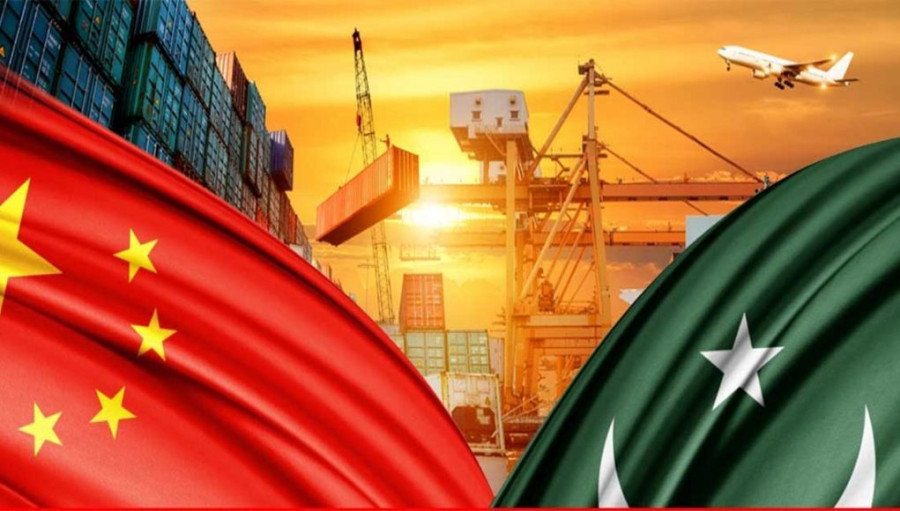Muhammad Javaid
SINCE the inception of China-Pakistan Economic Corridor (CPEC), the flagship project under the Belt & Road (B&R) initiative and a lot of work has already been done. Out of 22 big and small projects, 11 have been completed while work on the rest is underway. Although CPEC and B&R is the Chinese initiative, yet aims at collective prosperity of the entire region. The Free Trade Agreement (FTA) Phase II between Pakistan and China has already been signed besides other important agreements related to CPEC. In spite of lot of criticism by Opposition both the countries are much better positioned and the partnership between the two is growing. Obviously lot of job opportunities are expected to generate due to FTA but need to be optimal utilization of job opportunities from these generated through CPEC and it allied projects. For maximum utilization it is necessary to enhance the skill and productivity of Pakistani labour force.
Recently three small steel mills have been taken over by the Chinese and it is strange to note that all employees are replaced with Chinese nationals except required to deal with public. It is point of concern, it need careful analysis to find out the reasons. Is it due to non-availability of skilled work force or any other reason? If so, then our concerned ministry/departments should take immediate action to enhance the skills of labour up to the level required and leaving no excuse for Chinese and others to bring manpower from outside. I hope that Pakistani concerned ministry/department would have done homework what types of job opportunities will be generated as a result of CPEC and its allied projects. Pakistan needs to provide employment to the youth and other unemployed to restrict and eliminate the poverty, for that employment is the major instrument. Pakistan’s concerned authorities must be vigilant and should have a comprehensive follow-up program to avail maximum benefit from these projects otherwise the already poverty alleviation program like Ehsas will lose its effectiveness.
Under the CPEC’s industrial cooperation, out of nine Special Economic Zones (SEZ) the work on Rashakai has been initiated and 20 factories would be set up initially. According to original plan employment in the SEZs would be given to the local people and the latest technology would be transferred from China to Pakistan. Are local person are being trained to take over the jobs or again manpower will be imported from outside with the excuse of not having required skill? There are six areas in thesocial sector, including education, health, agriculture, water & irrigation, and poverty alleviation in which around 26 new projects will be initiated in Pakistan. Under the social sector cooperation of CPEC two model villages would be built in Pakistan under CPEC to uplift the living standard of low income segments of the society but that need sustainability in income of people which can be ensured by providing employment.
A comprehensive transportation package is also prepared. The economic corridor is considered central to China–Pakistan relations and will run about 2700 km from Gwadar to Kashgar. CPEC is intended to rapidly modernize Pakistani infrastructure and strengthen its economy by the construction of modern transportation networks, numerous energy projects, and special economic zones. A vast network of highways and railways are to be built under the aegis of CPEC that will span the length and breadth of Pakistan. Modern transportation networks built under CPEC will link seaports in Gwadar and Karachi with northern Pakistan, as well as points further north in western China and Central Asia. A 1,100 kilometre long motorway will be built between the cities of Karachi and Lahore as part of CPEC, while the Karakoram Highway between Rawalpindi and the Chinese border will be completely reconstructed and overhauled.
The Karachi–Peshawar main railway line will also be upgraded to allow for train travel at up to 160 km per hour. Pakistan’s railway network will also be extended to eventually connect to China’s Southern Xinjiang Railway in Kashgar. Over $33 billion worth of energy infrastructure are to be constructed by private consortia to help alleviate Pakistan’s chronic energy shortage, which regularly amount to over 4,500MW. A network of pipelines to transport liquefied natural gas and oil will also be laid as part of the project, including a $2.5 billion pipeline between Gwadar and Nawabshah to eventually transport gas from Iran. Heavy construction activities are expected in result of these interventions and local trained workforce in these sectors would be largely required. It is time to work out the estimated required manpower and skill levels for these projects.
It is pertinent to mention that a Memorandum of Understanding (MoU) has also been signed on the occasion between All Pakistan China Entrepreneurs Association (APCEA) and National Vocational & Technical Training Commission (NAVTTC) to provide skilled workforce to Chinese companies engaged in various projects in Pakistan. The Chairman of NAVTTC assured to provide all the required skilled labour for their projects. But it needs hard work and to associate the Chinese professional to ensure the skill level required to them otherwise I have doubt the repetition of Steel Mills instance.
In the South Asian region, Pakistan’s position in trained manpower is fairly weak. Development of Pakistan’s enormous human potential requires a shift in national priorities, and a greater share of the country’s financial resources to the technical education and vocational and technical training. Pakistan must create conditions and environment necessary for creativity and innovation essential for moving into and being competitive in the knowledge-based industries, which will provide the highest value-addition for the economy. This will require training of various technical skills in Pakistan preferably priority to require for CPEC projects. The formal institutions produce a very small proportion of the total increments to the skilled workforce and not necessarily in accordance with the demand and of requisite quality. Hence a high tech Vocational Training Institutes keeping in view the future requirements under CPEC needs to be established.
999










